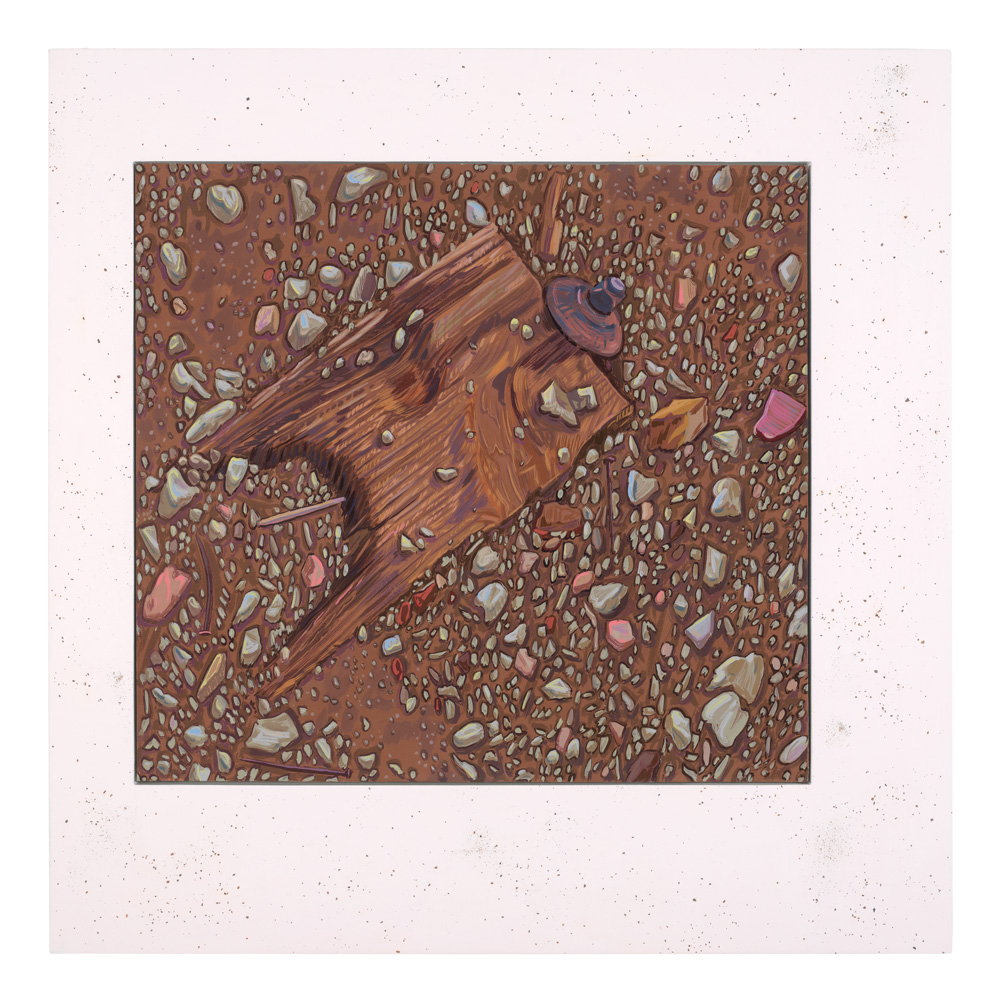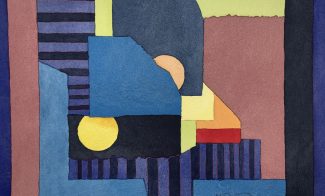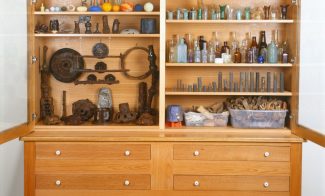Josephine Halvorson’s (Born 1988 In Brewster, MA) painting practice focuses on place and the careful acts of observation and transcription. Working outdoors, Halvorson selects a particular site, sets up her tools and materials and takes in her surroundings, translating what she sees in front of her into painted marks. The resulting paintings capture the heterogeneity and brilliance of the mundane, revealing each square inch of earth to hold countless colors, shapes, and textures.
Halvorson painted Ground View: Plank at an abandoned mine in Death Valley, California, which the artist has visited numerous times over the past decade. The landscape bears evidence of human intervention, the earth having been literally turned up by mining; this industrial past riddles the desert landscape and is the focus of Halvorson’s interest. The wooden board and attached metal bolt at the center of this painting reflect the wear and tear of the harsh landscape and speak to an inaccessible use in the industrial past. In this recent body of work, Halvorson further extends her exploration of place by collecting stones, soil, and debris from the sites where she paints. Grinding this material down and mixing it with pigment, she creates a subtly distinct frame or extension of the painting, which acts like a bridge between the site of creation and the viewing space of the gallery. Ground View: Plank registers Halvorson’s singular relation to a specific time and place as it was encountered, negotiated, and ultimately rendered in paint.


